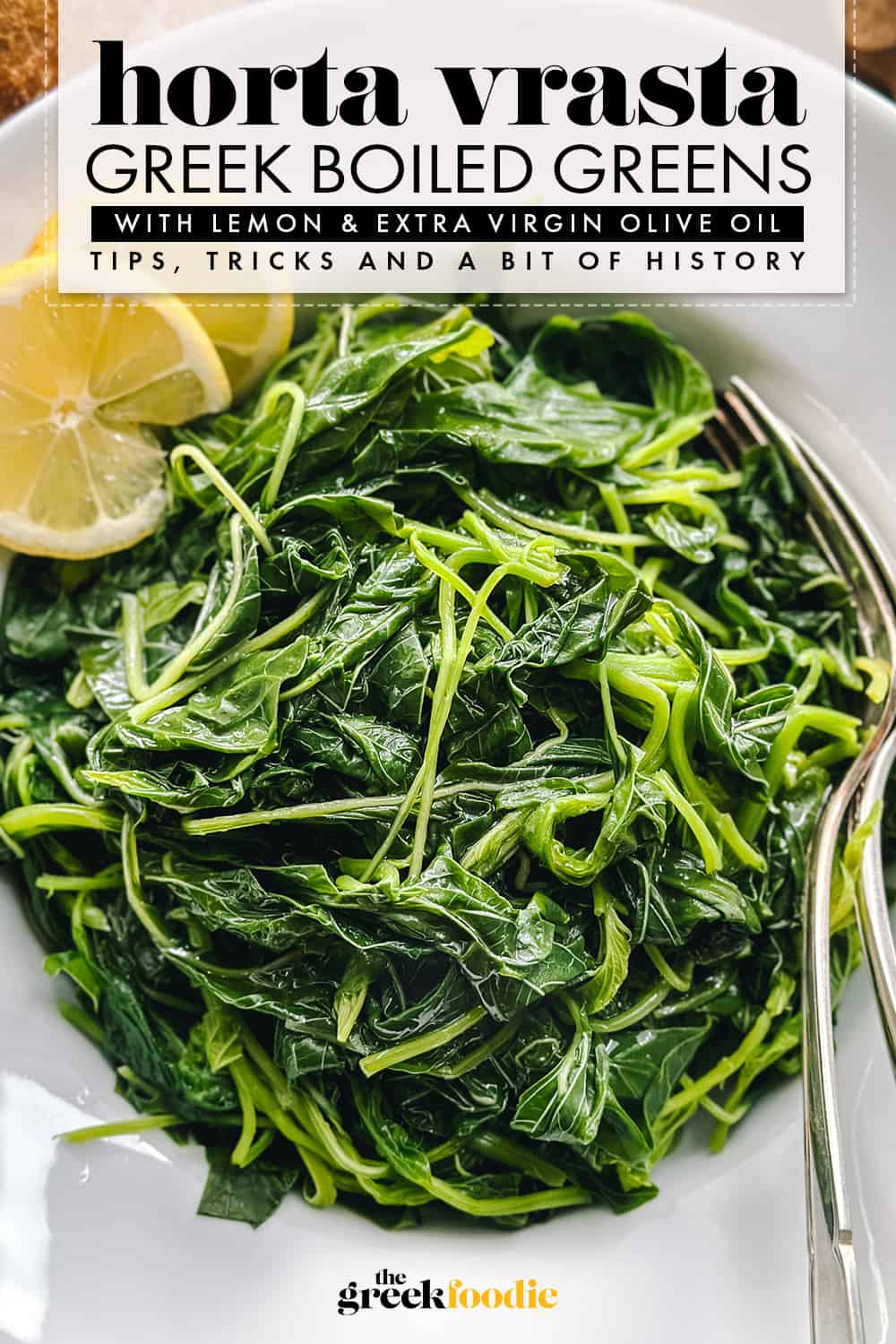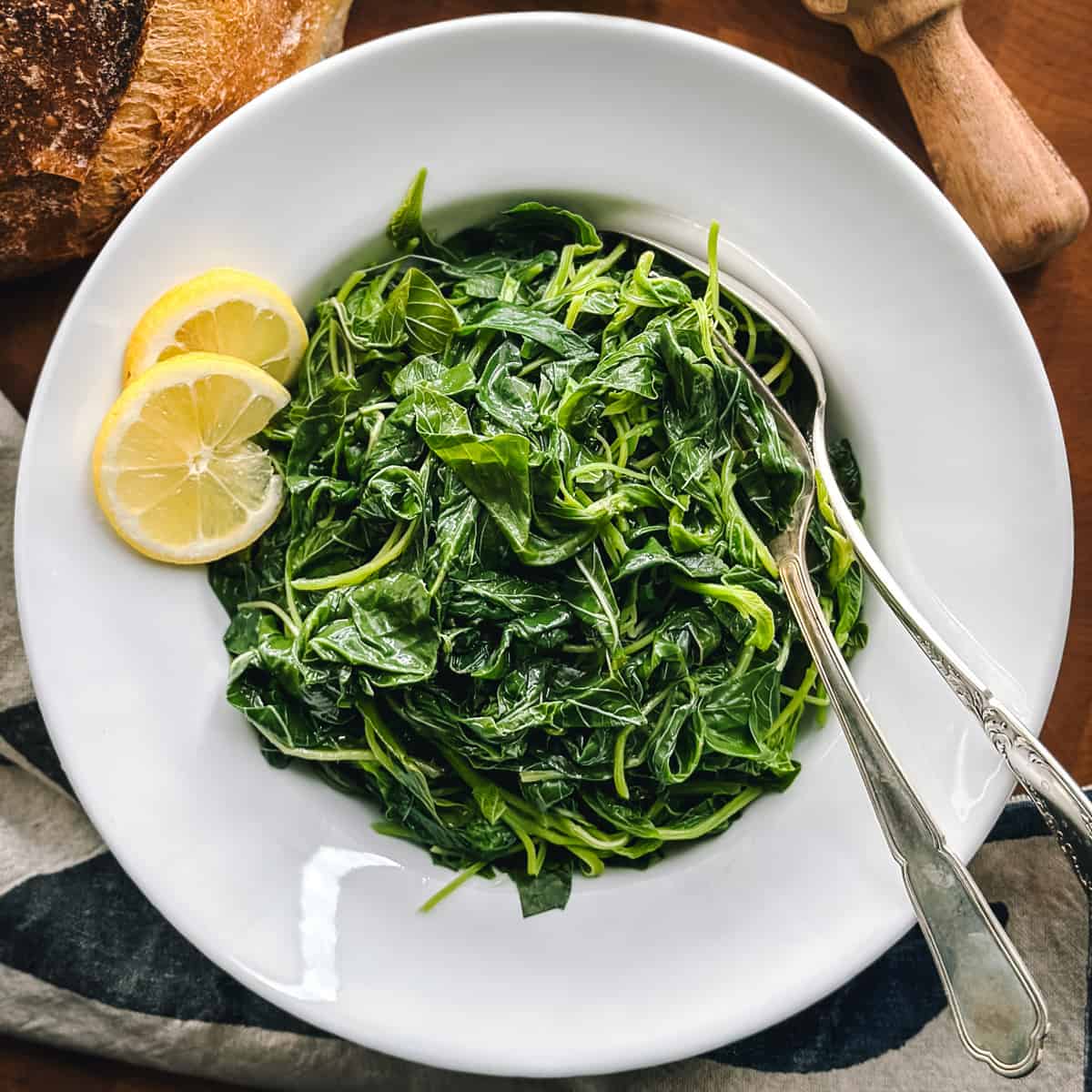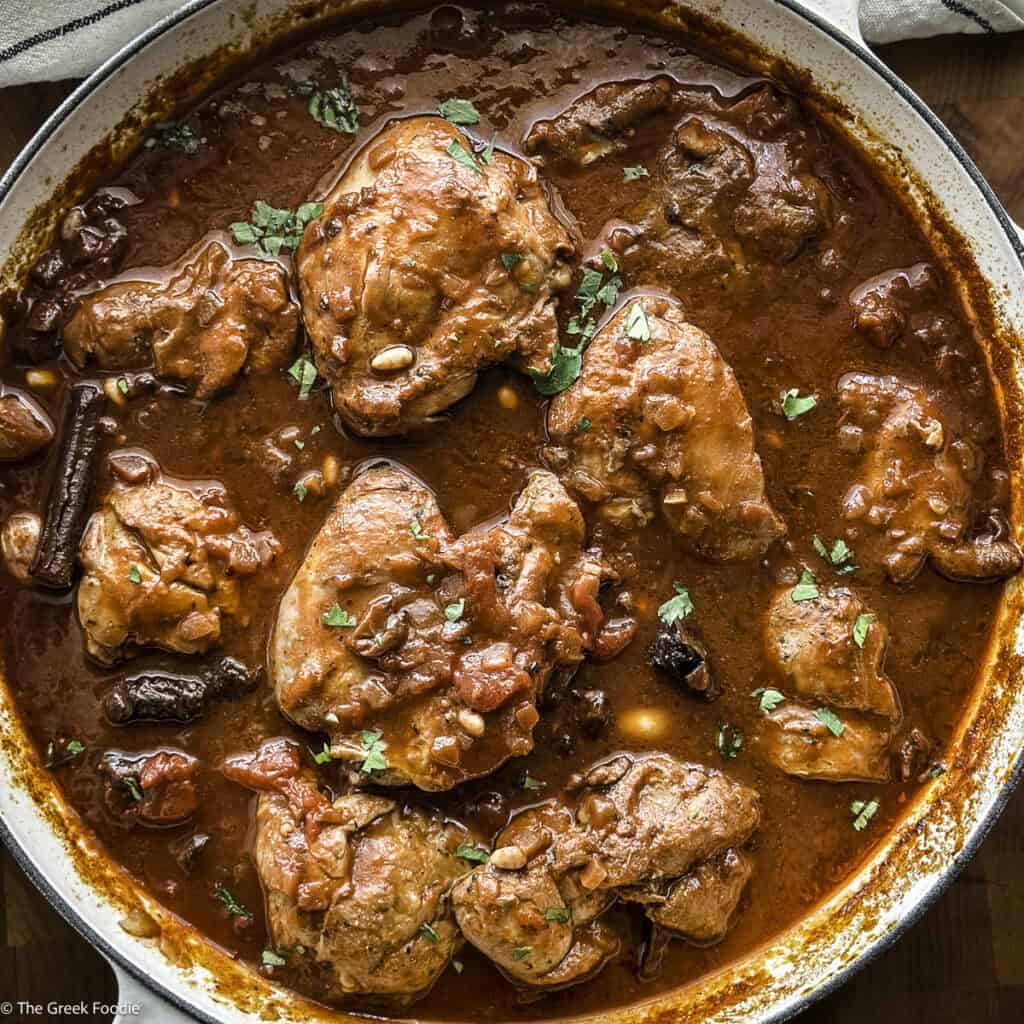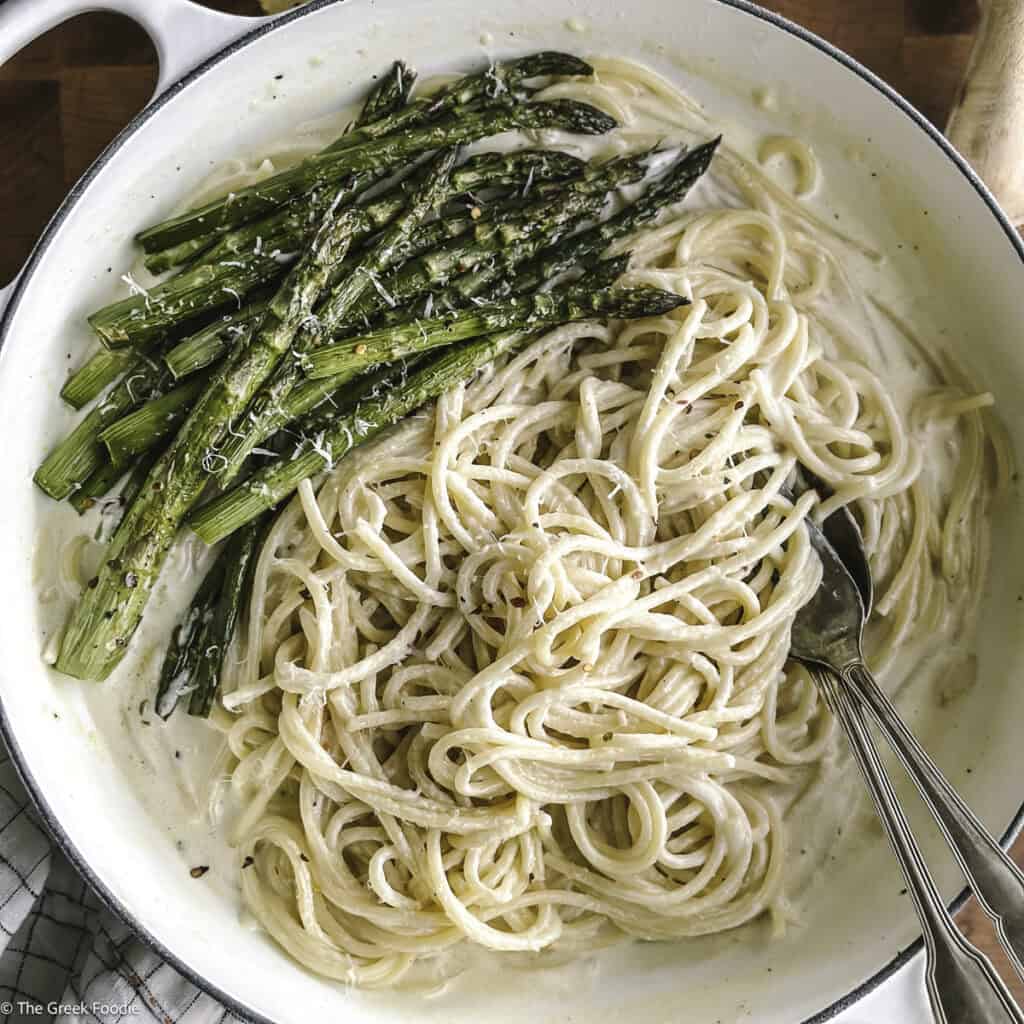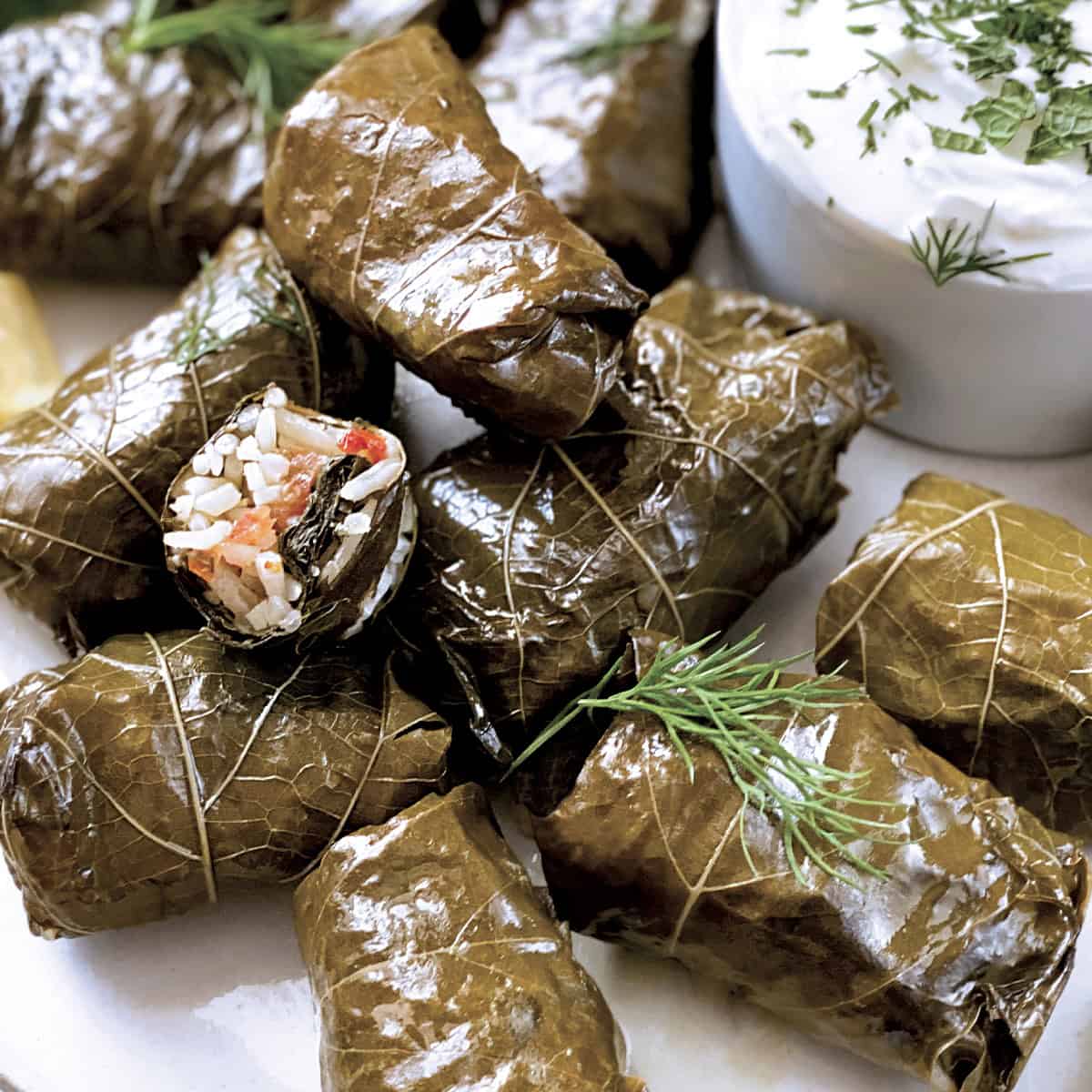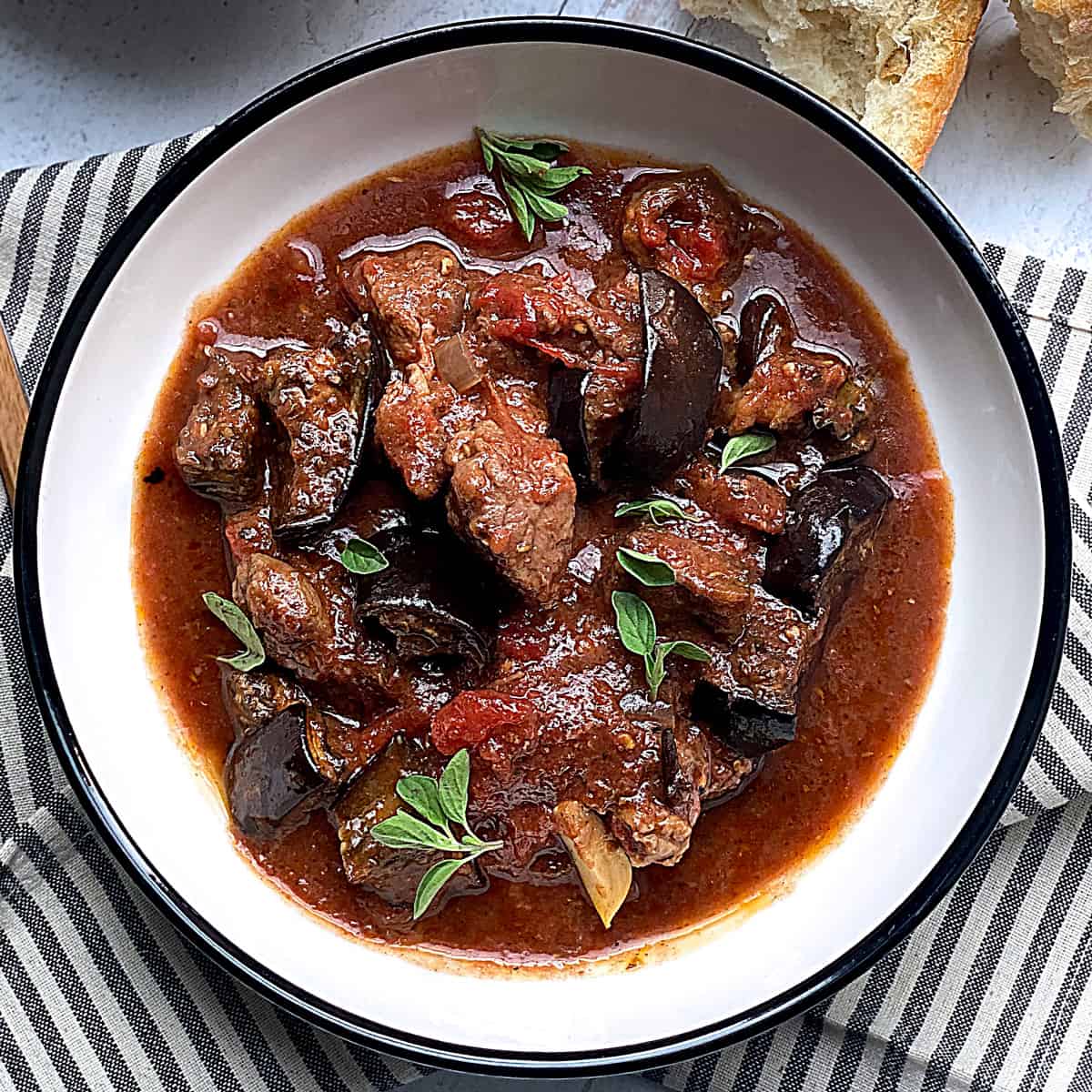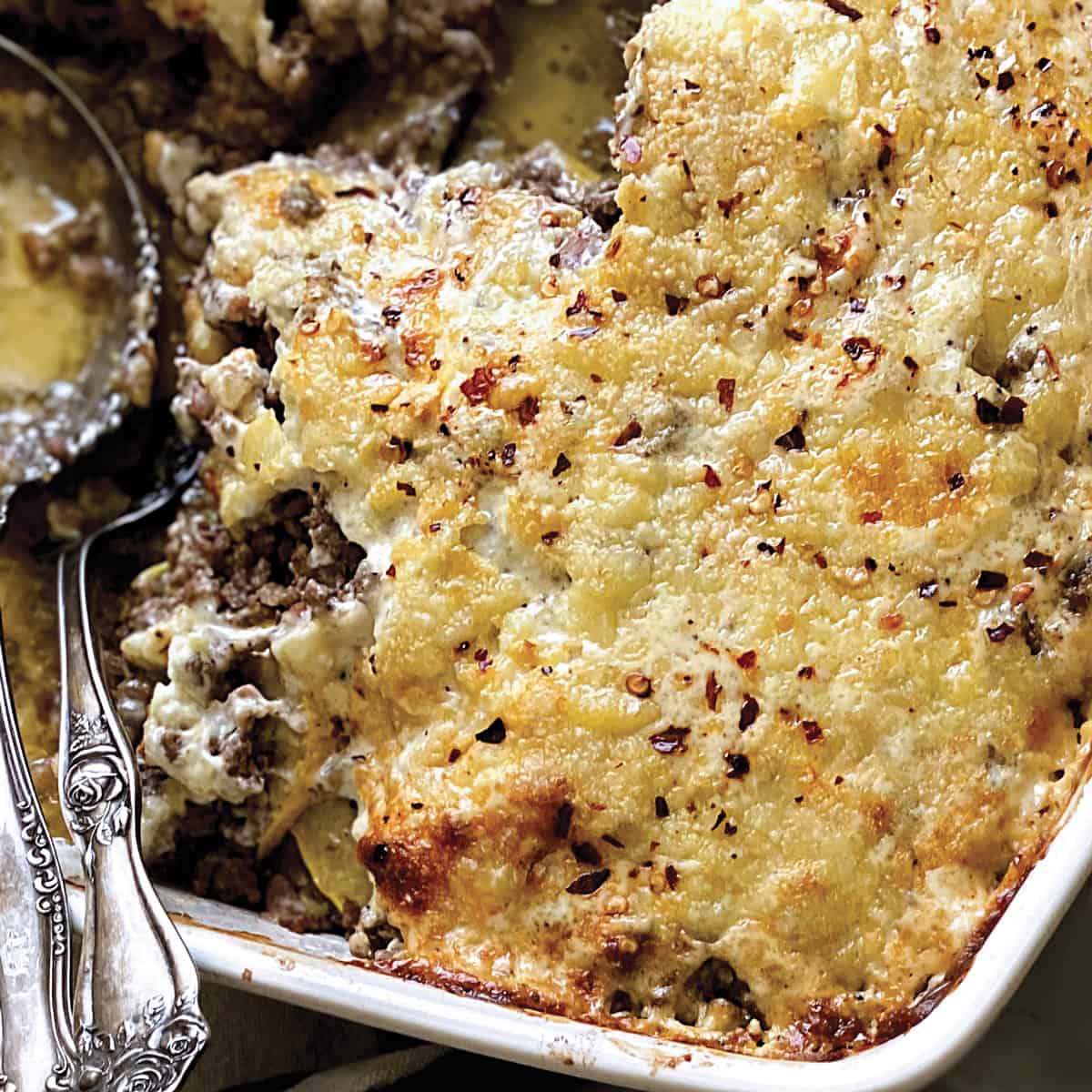Horta-Greek greens with olive oil and lemon are a simple, delicious dish and a staple in Greek households. Dressed with extra virgin olive oil and fresh lemon juice, horta is a great side dish for grilled fish, chicken, or steak. Best of all, they’re incredibly easy to prepare!
If you love Horta-Greek greens, you will also love Briam-Greek Roasted Vegetables, Papoutsakia-Stuffed Eggplants, or Stuffed Squash Blossoms!
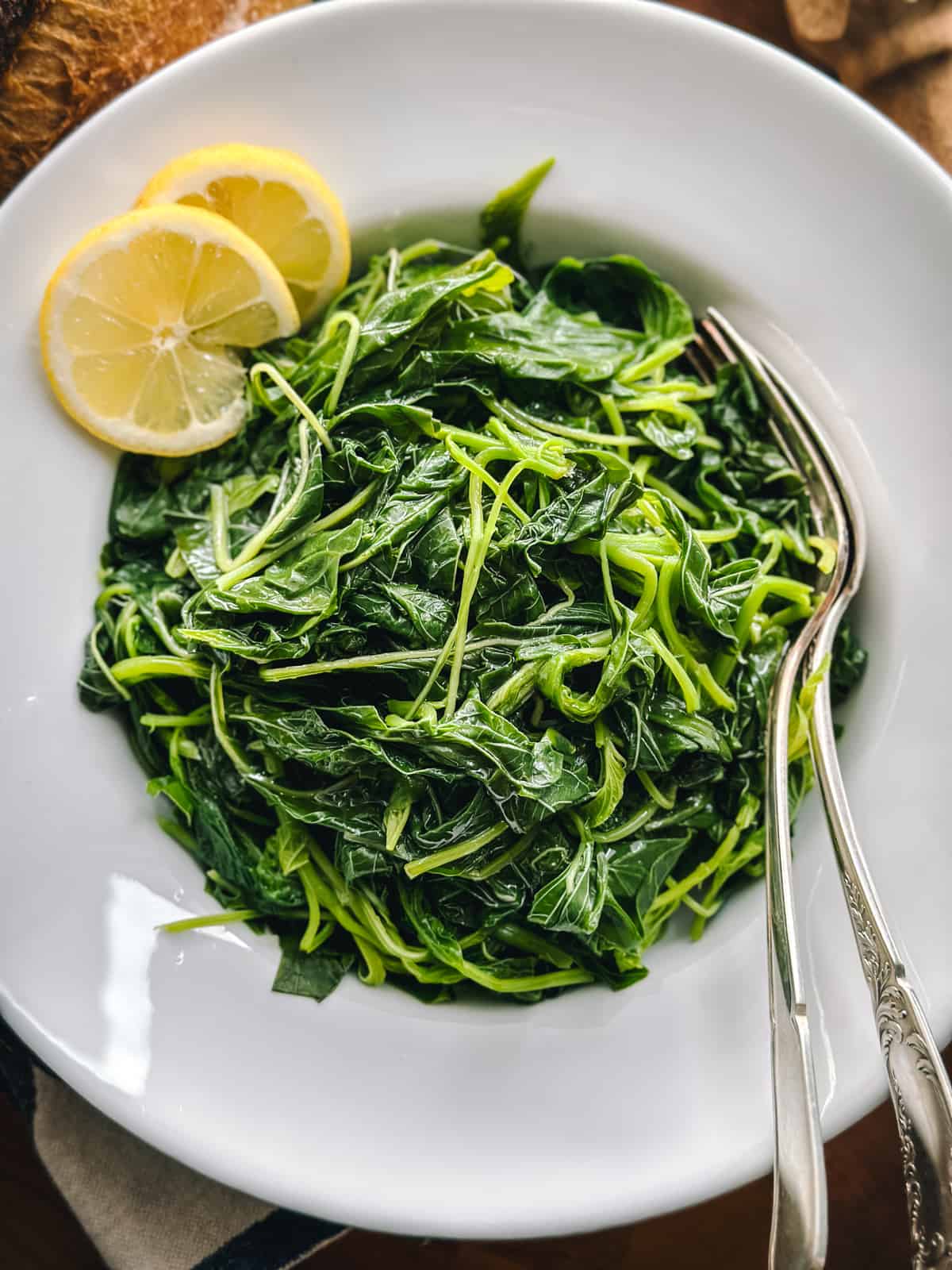
What are horta
Horta are wild greens such as herbs, leaves, sedges, and flowers that have been treasured ingredients of Greek nutrition since ancient times.
The wild greens grow without cultivation in many places, mainly in the mountains. Aromatic greens/herbs like myronia (wild chervil), stamnagathi (wild chicory), radikia (dandelion greens), endives, tsouknida(nettles), vlita (amaranth leaves), seskoula (Swiss chard) are abundant in Greece.
Greens mostly come out in the spring, although good weather can often trick them into coming out earlier than their season, and bad weather may prolong their hibernation.
It’s interesting to note that some Greeks have a knack for foraging greens while on a road trip or even stopping by a scenic spot in suburban Athens. They have inherited the gift of identifying local species of greens from their ancestors, allowing them to distinguish between the ones that are fit for consumption and those that are not. They keep a knife and cloth bags handy in their cars to be prepared for a spontaneous gathering of greens.
In Greece, during difficult periods, such as the Second World War Axis occupation, the wild greens saved many lives since they were the people’s only nutritional solution.
Horta are very nutritious
According to scientists, these greens are of the greatest nutritional value due to their high content of valuable ingredients, especially when cooked and mixed with each other. The first reports of the nutritional properties of greens were recorded from ancient times and are confirmed today. For the ancient Greeks, Romans, Chinese, and Arabs, greens had healing properties either cooked in various foods or as teas.
Some green varieties are now cultivated and available in grocery stores.
The Greek recipes with greens are endless. From traditional Cretan herb pies to stews, all these recipes allow Greeks to take advantage of the properties of wild herbs, which fortunately exist in abundance in Greece.
How to eat horta
The easiest and most common way to enjoy horta is to steam them and serve them as a side dish with lemon juice and olive oil.
For this recipe, I am using vlita (amaranth leaves). These greens have a strong, slightly bitter, refreshing taste, especially organic ones. They are an excellent accompaniment to fried fish, grilled meat, or even served plain with french fries.
Vlita, in addition to boiling, they can be lightly fried with some onion, garlic, and tomato and garnished with herbs, such as basil, mint, parsley, thyme, thyme, and rosemary.
Here is what you need
This recipe is a guide on how to make greens in general. You can use the same instructions with greens such as dandelion, amaranth, swiss chard, or any leafy green you choose, like chicory.
For serving, you will need lemons and extra virgin olive oil.
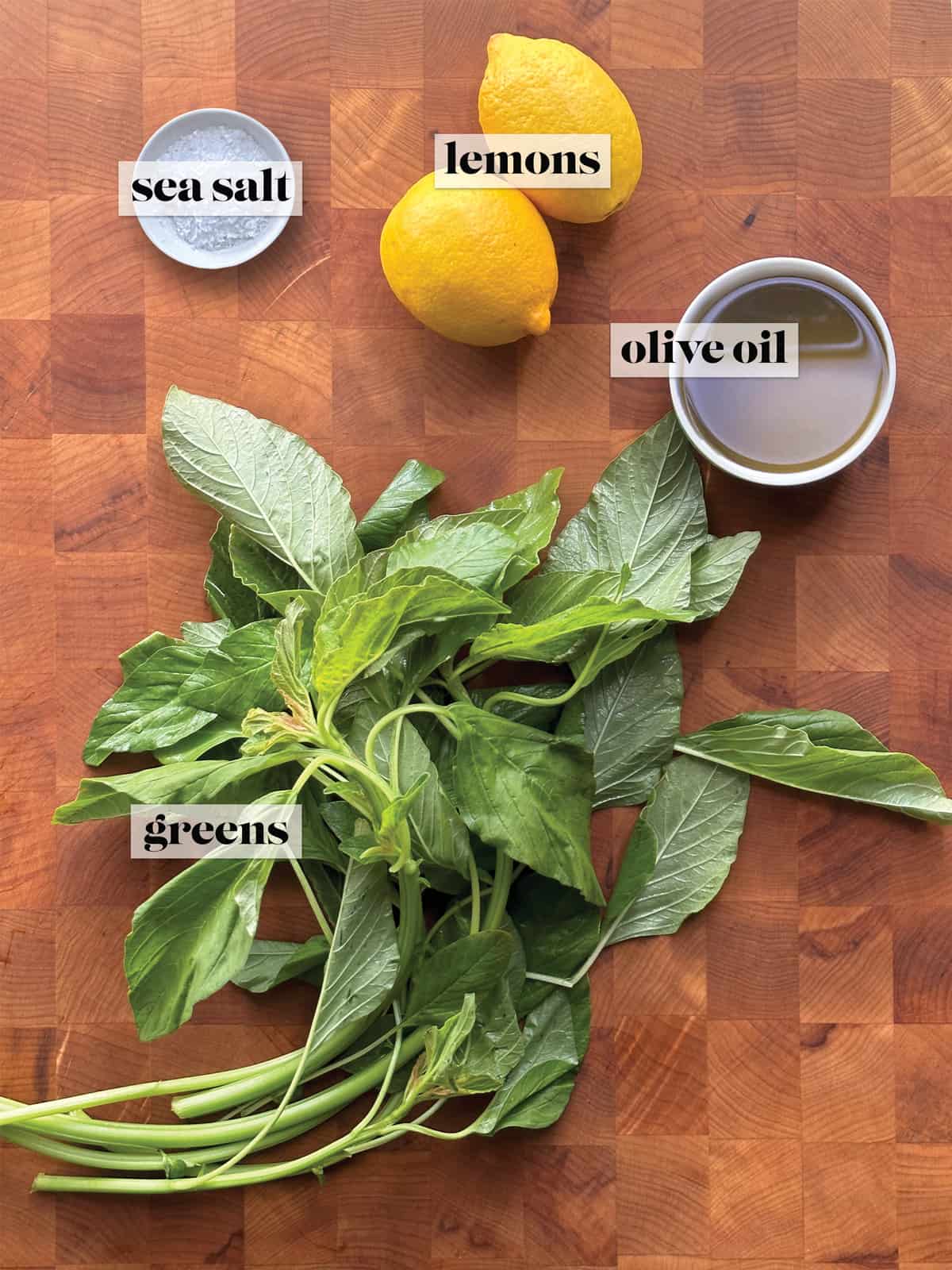
How to prep horta
Wash and trim
Place the greens into a large bowl or in a basin filled with water and one teaspoon of salt (an old housewive tale says salt helps to settle the soil).
Wash the greens very well and add enough vinegar to the last water as a rinse.
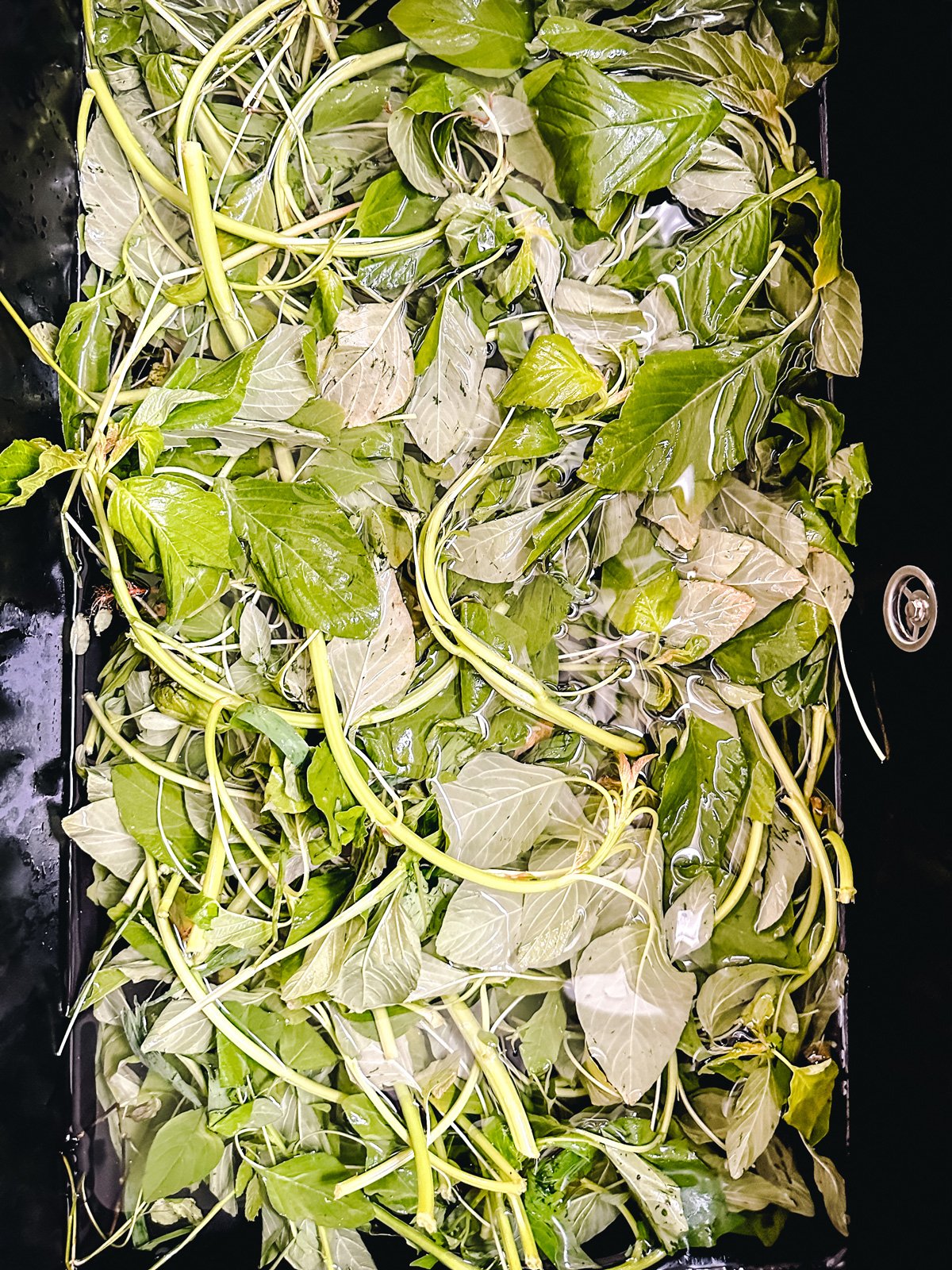
Alternatively, let them soak in the water for 30 minutes, and the soil will settle at the bottom. Repeat until they are completely clean.
As for trimming, in most greens, you do not need to remove the stems (stalks).
However, if they are thick, remove them, but do not throw them away. They are excellent to use in making broths.
If the greens are not cooked on the day of purchase, shake them to remove most of the soil. Do not wash or moist them.
The best storage is a cloth bag or pillowcase on the lowest shelf of the refrigerator so they are not exposed to extreme cold. They will keep well for 2-3 days.
Cook
Fill a deep, large pot with water and one teaspoon of sea salt. Place over high heat and bring to a boil.
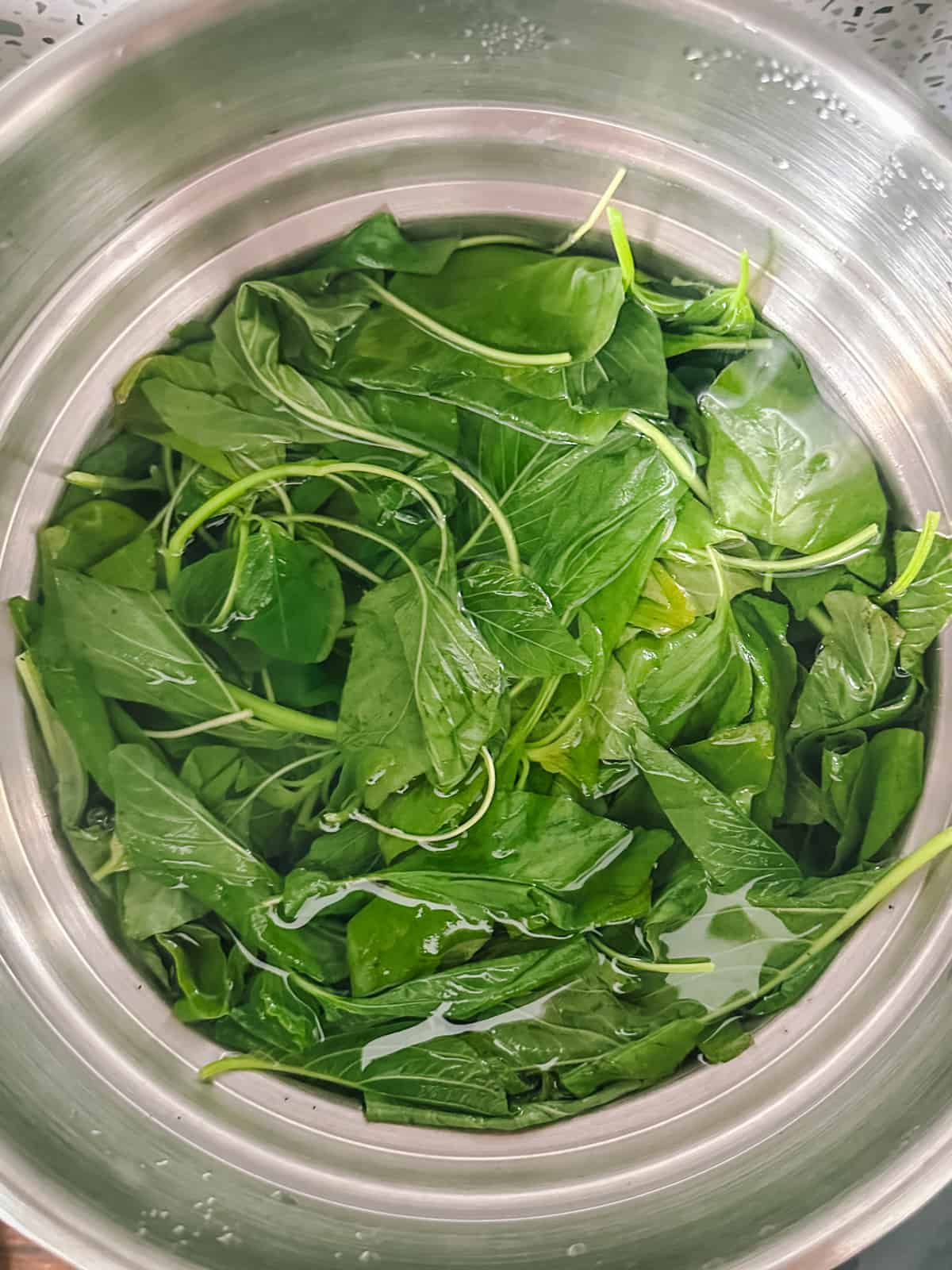
Place the washed and drained greens in the pot gradually so the boiling is not interrupted. Do not cover the pot.
For about 2 lbs of greens (net weight), calculate 12 minutes of boiling time—interesting fact: The greens cultivated on farms will boil faster than wild greens picked from the mountains.
Adjust the cooking time depending on how firm you prefer their texture.
How to keep their green color
It is not necessary to keep the color, especially when horta are cooked and consumed on a frequent basis. On a special occasion, when I serve horta as a side to a barbecue or a roast, I will follow the bellow method so greens look prettier on the table.
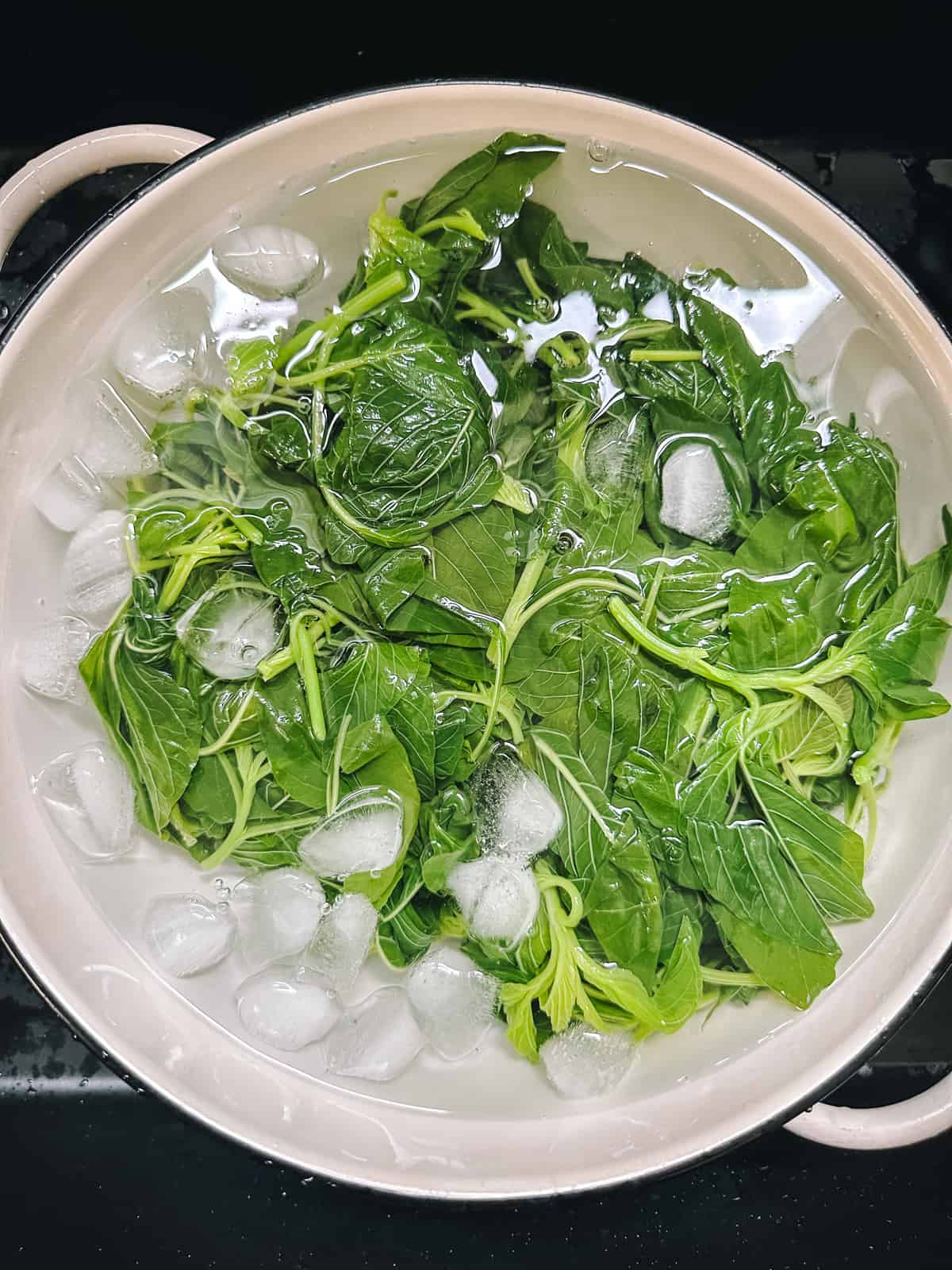
Just before the greens are done, fill a large bowl with cold water and plenty of ice cubes.
As soon as they are done, transfer them with a slotted spoon to the bowl of ice water. The cooking stops, and they retain their vibrant green color.
Drain the horta well and serve with lemon wedges and extra virgin olive oil.
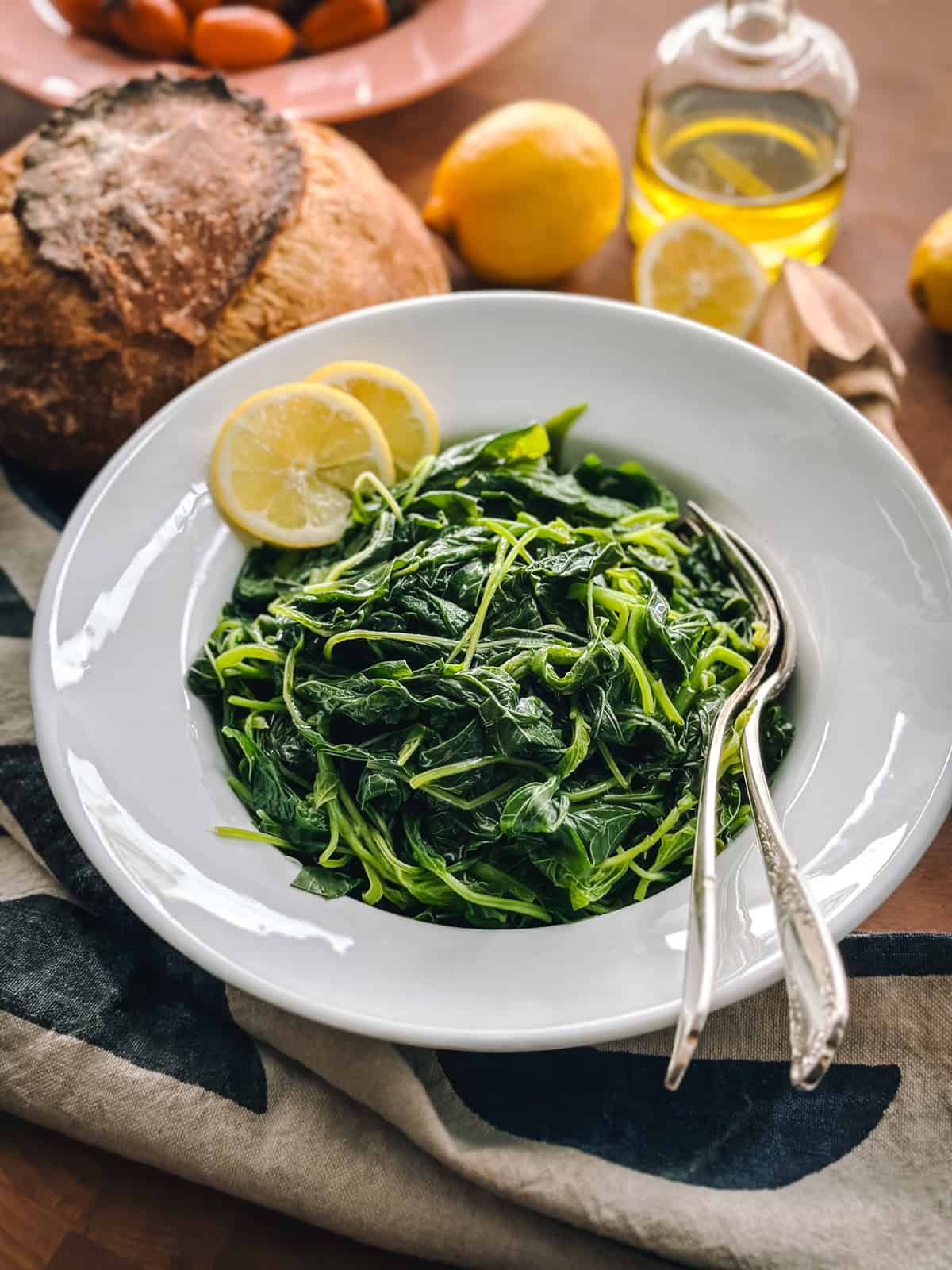
Helpful tips
Much of the green’s deliciousness is at the roots, so you shouldn’t throw them away. After cutting the lower part from the root, keep the remaining pieces, wash them well, and use them in your cooking, e.g., add them in stews with veal or lamb or use them for your homemade broth.
We don’t put lemon on boiled greens that will not be consumed immediately. When we add lemon, the countdown begins until they turn black for good. Add the desired amount of lemon juice when we are going to serve.
Horta are usually enjoyed at room temperature but can also be enjoyed warm, right after cooking.
Horta are best consumed warm right after cooking or at room temperature. Reheating is not recommended. Generally, greens will lose beneficial ingredients when reheated, and in some instances, they can become toxic.
Cooked this? Rate this recipe! You can also leave a comment below. I love hearing from you!
WANT TO EAT LIKE A GREEK? Subscribe to my newsletter and follow me on Facebook, Pinterest, and Instagram for the latest updates.

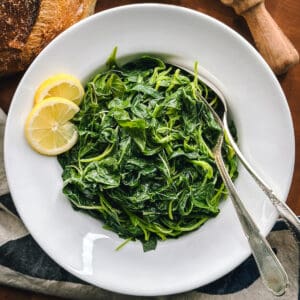
Horta-Greek Greens With Olive oil And Lemon
Ingredients
- 2 lbs dandelion greens or amaranth greens, swiss chard, or any leafy green you choose, like chicory.
- 2 lemons
- extra virgin olive oil
Instructions
Wash and trim the greens
- Cut the lower part of the root, which has soil, and the rest either remove and keep aside or cut it crosswise, so it is cooked at the same time as the leaves.
- Place the greens into a very large bowl or in a basin filled with water and 1 teaspoon of sea salt. Wash the greens very well and add enough vinegar to the last water, as a rinse.
Trim
- In most greens, you do not need to remove the stems (stalks). If they are thick, cut them, and save them for your homemade broths.
Cook
- Fill a deep, large pot with plenty of water and one teaspoon of sea salt. Place over high heat and bring to a boil.Place the washed and drained greens in the water gradually so the boiling does not stop. Do not cover the pot. For about 2 lbs of horta (net weight), calculate 12 minutes of boiling time. Adjust the cooking time depending on how firm you prefer their texture.
Notes
- If the greens are not cooked on the day of purchase, shake them to remove most of the soil. Do not wash or moist them. The best storage is a cloth bag or pillowcase on the lowest shelf of the refrigerator so they are not exposed to extreme cold. They will keep well for 2-3 days.
- Much of the greens’ deliciousness is at the roots, so you shouldn’t throw them away. After cutting the lower part from the root, keep the remaining pieces, wash them well and use them in your cooking, e.g., add them in stews with veal or lamb or in use for your homemade broth.
- We don’t put lemon on boiled greens that will not be consumed immediately. When we add lemon, the countdown begins until they turn black for good. Add the desired amount of lemon juice when we are going to serve.
- Avoid reheating horta. Horta are best consumed warm right after cooking or at room temperature. Reheating is not recommended. Generally, greens will lose beneficial ingredients when reheated, and they can become toxic.
Nutrition
